Art-toy maker Kyle Kirwan’s collection of bunny figures from Kidrobot.
Writer: Brianne Sanchez
Photographer: Duane Tinkey
Spending an evening with the creative members of the No Coast Trouble Club is like peeking into the workshop of rogue elves. When this group of independent art toy designers meets at Mainframe Studios, they bring along imaginative pieces at various stages of completion: The start of a hand-carved monster emerging from resin. Spiky smiling vinyl objects ready for paint. A palm-sized shimmering octopus about to go up for sale online. Working in a variety of mediums, each designer develops their own signature shapes and styles.
“Fun is a built-in part of this,” club founder Kyle Kirwan said. “Nobody takes it too seriously, even when they’re taking it seriously.”
With their latest creations in hand, Trouble Club members gather to geek out over an emerging sculptural art form. Designer art toys are limited-edition collectibles that spawned from pop culture, graphic design, anime and other urban influences in the 1990s. Each finished product is packed with personality, and most have an affordable price tag.
Kirwan said that what separates a designer toy from a mass-market piece is the artist’s name as a selling point. A few, like Takashi Murakami, are globally famous in the gallery world. Other popular creators, like Tristan Eaton, Ron English and Tara McPherson, enjoy more niche notoriety. Big names sometimes fetch upward of $2,500 for a single toy, but most entry-level pieces range from $5 to $50.
“People who want to build a collection and support artists can be part of this,” Kirwan said. “You don’t have to be a millionaire.”
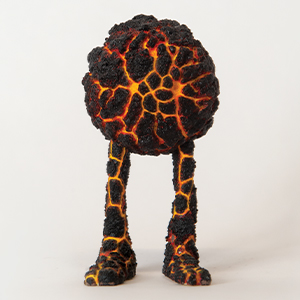
Kyle Kirwan draws inspiration from all kinds of things, including crusty lava.
Midwest momentum
Members of Des Moines’ designer toy collective are mostly former Toys “R” Us kids: Gen Xers and millennials who grew up in the golden era of action figures and Cabbage Patch Kids. They can still recall the delight of unboxing a new Batman or My Little Pony figurine but began buying and making their own figures after discovering the designer toy scene.
Kirwan, who grew up in San Diego, formed the No Coast Trouble Club shortly after he and his partner, Sarah Booz, moved to Des Moines from New York City in late 2021. They made the move partly because of the city’s affordability and the opportunity to rent space at Mainframe Studios, the largest nonprofit creative workspace in the nation.
“I was expecting cheap studio space, but I’ve been surprised by the people in the art scene who are hungry to build something,” Kirwan said of the momentum he senses around town. “Chasing the art dream takes a lot of effort and a lot of energy. To come out here and pool our resources was really interesting.”
Coincidentally, he was already connected with two local toymakers: Beau Scott, a photographer and gallerist who designs toys under the name “baykiddead,” and sculptor Heather Hyatt, whose Owlberry Lane creatures channel a woodland fantasy. Both founding club members, like Kirwan, arrived at designer toys from a fine arts background.
“It really is this cyclical scene,” Kirwan said. “People are drawn to it because of the community. You have direct access to a lot of creators, a lot of people making things. A lot of people who started as collectors become artists. Everybody who loves this stuff wants to be involved.”
Shared interests
Online message boards have popularized the independent toy industry, but face-to-face gatherings help build critical mass in a niche that takes a playful approach to art. Community is part of the appeal of creating small-batch collectibles. Creators get together to learn from each other’s techniques, critique the latest designs and prepare for group shows and conventions, like CollectedCon this past August in Chicago.
“Without that community to amplify the scene to me, I probably would have only collected a few pieces,” graphic designer Kyle Thye said while priming several of his wooden Blockhedz. “I think there are a lot of collectors in this area, but we’re all in these little pockets. Becoming aware of each other is a cool thing.”
Being part of a collective gives No Coast Trouble Club members a bigger presence and helps generate hype in the marketplace. Many artists release new designs in “drops,” similar to streetwear brands. Some also sell “blind boxes” of toys with secret designs that offer elements of surprise and delight. For Scott, the care and creativity he puts into personalized packaging is part of the fun. It creates a relationship that’s more rewarding than simply buying a toy off the shelf.
“As an artist, the transition from wanting to collect other people’s stuff into wanting to make my own was easy,” Scott said. “You want to be a part of the conversation, not just someone listening to what everybody else is saying.”
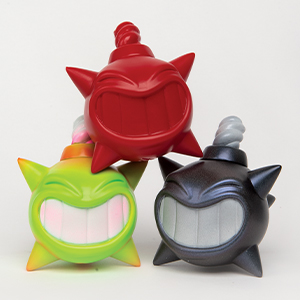
For his “Bad Luck Bomb” series, Joseph Gaiser trims vinyl by hand and uses a heat gun to soften and connect the pieces before painting.
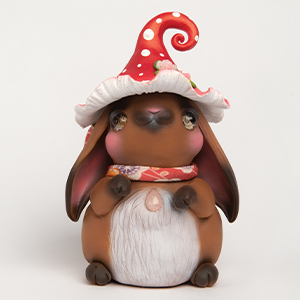
Heather Hyatt’s “Stella the French Lop” is a hand-painted clay figure, with handmade glass eyes. The artist imagines her lounging in grass and snacking on fungi.
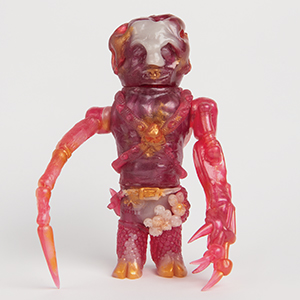
Beau Scott used hand-cast resin to create “Col Ru Rog the Bone Stalker,” which has an articulated head, arms and torso.

Collectors are often drawn to unexpected colors, like Tanner Saltzman’s rainbow reaper.

Artist Kyle Thye offers collectors different ways to access his “Phantom Outhouse,” including vinyl stickers and this handmade wooden sculpture.
 Meet the No Coast Trouble Club
Meet the No Coast Trouble Club
These Midwest makers rep Iowa under the banner of a cartoon ear of corn that looks like it could hold its own in a biker bar.
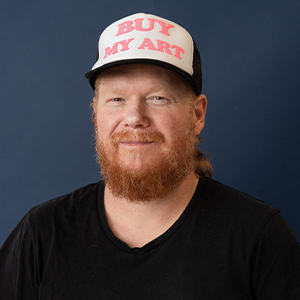
Kyle Kirwan
Kirwan enjoys global recognition for his character-driven art and sculptures, which have been featured in numerous galleries and publications. See pieces from his collections in person at his Mainframe Studio, No. LL04.
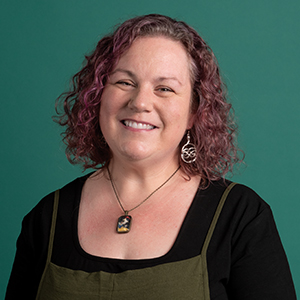
Heather Hyatt
Hyatt developed her own resin-like material to sculpt impish Owlberry Lane characters in a storybook style. Best described by the Japanese word ‘kawaii,’ her internationally sought pieces evoke a feeling of tenderness. Hyatt and her late daughter, Niavh, bonded over making art and their shared love of imaginary creatures when she was battling childhood brain cancer.
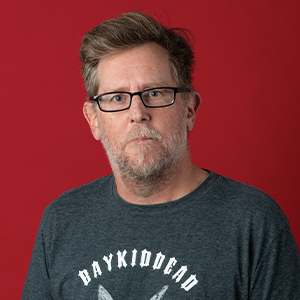
Beau Scott
Scott, a fine-art photographer and gallerist, goes by “baykiddead” in the designer toy world. He enjoys being hands-on with every aspect of the process, from conception to shipping. Rather than simply posing characters on a shelf, some collectors interact with his pieces by placing and photographing them in backdrops that highlight unique features.
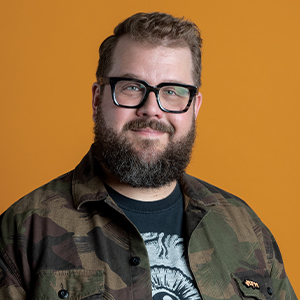
Kyle Thye
A graphic designer by day, Thye draws inspiration from science fiction, horror, punk rock and rockabilly music. Collectors of his Urban Monsters know him for the Blockhedz and Phantom Outhouse series.
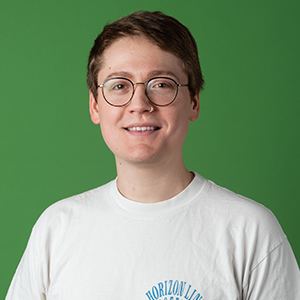
Joseph Gaiser
Gaiser is a software engineer who recognized Kirwan’s work from YouTube at an Open Studio event at Mainframe. Kirwan’s input helped him launch UnluckyToys with a “Bad Luck Bomb” line of soft vinyl toys.
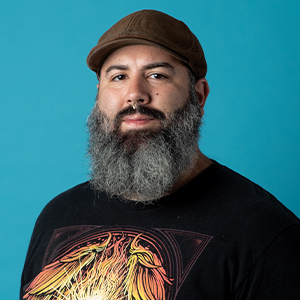
Tanner Saltzman
Saltzman, a tattoo artist, brought “cyborg reaper” pieces with articulating components to a recent meetup. His work under the SicSweet label demonstrates the jump from sketches to 3D-printed objects.











